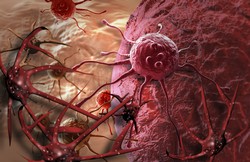Magnetic hyperthermia kills cancer cells
Despite extensive research over the years, diagnosis and therapy for many types of cancer remains poor. Targeted delivery of anti-cancer drugs is a challenge, as is relapse, a hallmark of cancer believed to emerge from the existence of cancer stem cells. As a result, there is an imminent need for novel anti-cancer interventions. To address this, scientists of the EU-funded MULTIFUN (Multifunctional nanotechnology for selective detection and treatment of cancer) project developed and validated minimally invasive nanotechnology for the early and selective detection and elimination of breast and pancreatic cancer cells. Their activities ensured optimal nanoparticle biocompatibility and functionalisation. Using a unique technique, scientists successfully produced multifunctional nanoparticles that could preserve their biological activity from all conjugated molecules. These multifuntionalised magnetic iron oxide nanoparticles (MNP) demonstrated the capacity to be used for both diagnostic and therapeutic purposes. The designed formulations proved their efficiency, safety and non-toxicity in in vivo models of cancer. To facilitate magnetic nanoparticle detection in vivo in tissues and biological fluids, researchers developed appropriate scientific instrumentation. In addition, a magnetic field generator was developed to perform in vitro and in vivo magnetic hyperthermia experiments. From a therapeutic perspective, these nanoparticles induced cancer cell death by the synergistic effect of magnetic heating and the delivery of anti-cancer agents. In subcutaneous models of breast and prostate cancer, hyperthermia treatment combined with MNP exhibited strong tumour regression. Importantly, the MULTIFUN theragnostic tool demonstrated the capacity to target cancer stem cells endowed with drug resistance as well as tumour relapse, to thereby improve therapeutic outcomes. Overall, the MULTIFUN tool constitutes a promising alternative to standard anti-cancer treatments. The functionalisation capacity of these nanoparticles signifies their great potential for the diagnosis and therapy of other types of cancer.
Keywords
Hyperthermia, cancer, diagnosis, therapy, magnetic iron oxide nanoparticles

